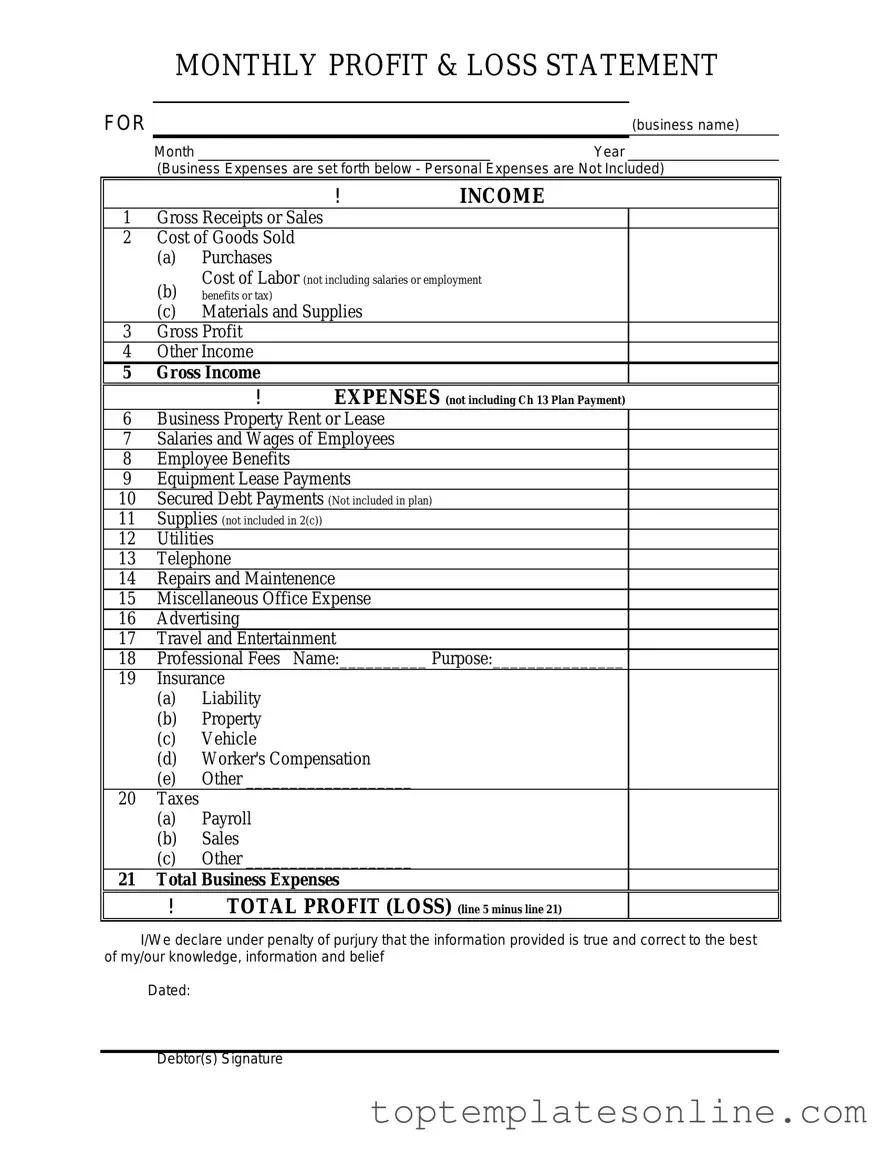The Profit and Loss form, often referred to as the income statement, serves as a crucial financial tool for businesses of all sizes. This document provides a comprehensive overview of a company's revenues, costs, and expenses over a specific period, allowing stakeholders to assess the organization’s financial performance. Key components of the form include total revenue, which reflects all income generated from sales, and the cost of goods sold, which accounts for direct costs associated with producing those goods. Operating expenses, such as salaries, rent, and utilities, are also detailed, giving insight into the ongoing costs of running the business. The form culminates in the net profit or loss, a critical figure that indicates whether the company has earned more than it has spent during the reporting period. By analyzing this form, business owners and investors can make informed decisions regarding budgeting, forecasting, and strategic planning.
